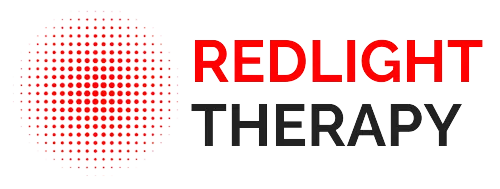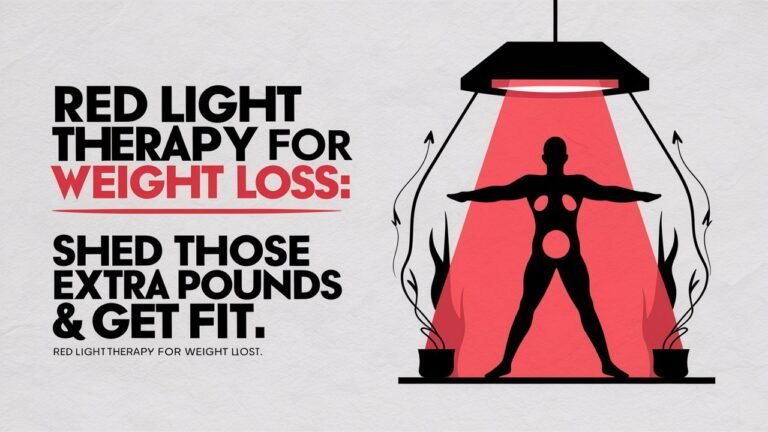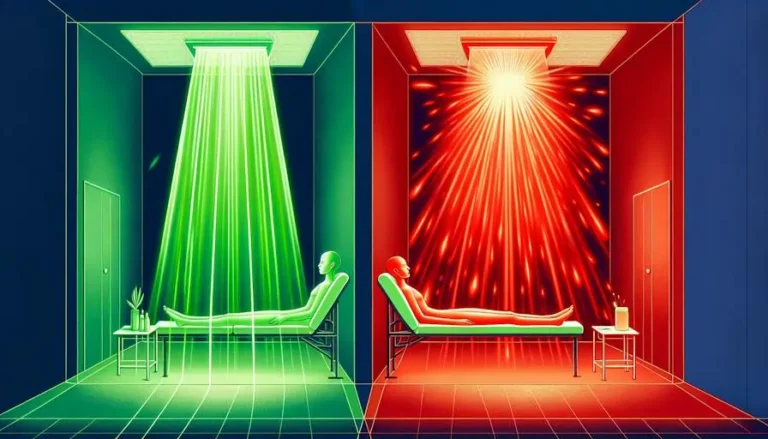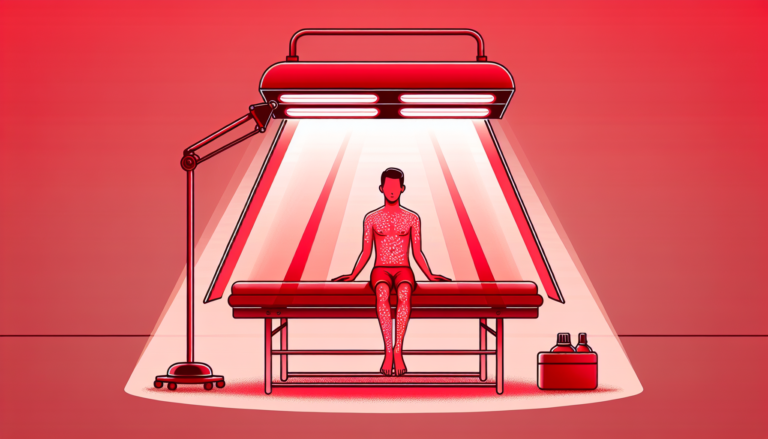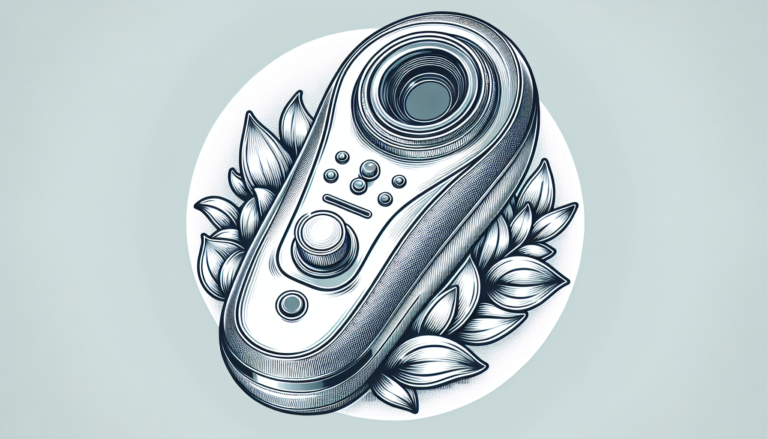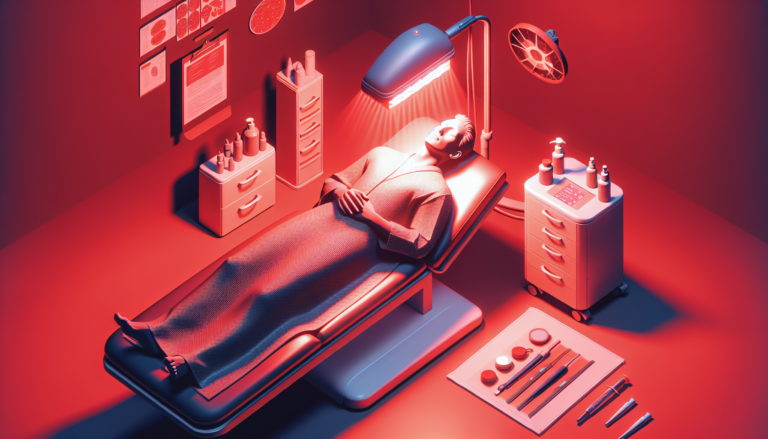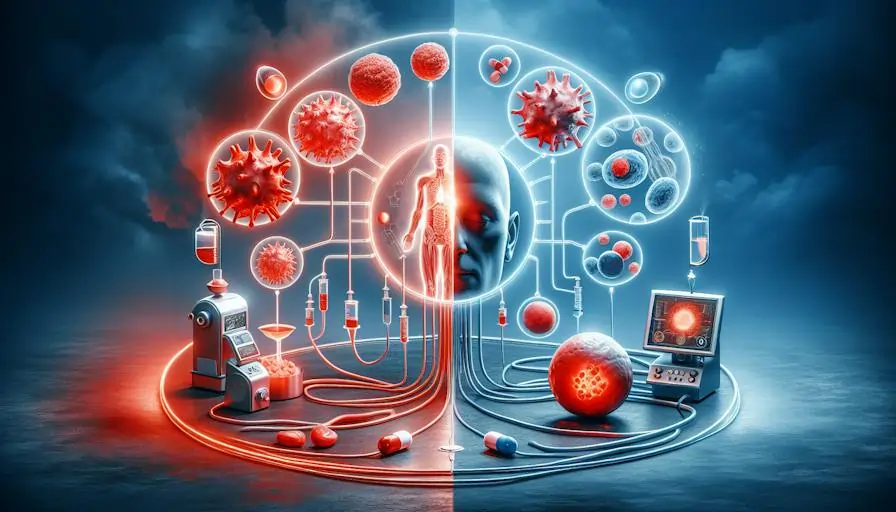
Red light therapy has been gaining popularity as a safe, non-invasive treatment for various conditions, from skin aging to chronic pain. However, some people have raised concerns about whether this seemingly miraculous therapy could have a darker side – what if Red Light Therapy Causes Cancer?
Red light therapy has been making waves in the wellness world, with the global market expected to reach a whopping $1.52B by 2033. This non-invasive treatment has gained popularity among celebrities like Kate Hudson, Chrissy Teigen, and Kourtney Kardashian, who swear by its potential to improve skin health, reduce pain, and even combat signs of aging.
But people have started to wonder – could this seemingly miraculous therapy have a hidden dark side causing cancer? Some studies have suggested that high-intensity red light could potentially stimulate tumor growth under certain conditions.
It’s a valid concern, especially when you consider that light therapy is often used as a complementary treatment for cancer patients. So, if Red Light Therapy can help cancer patients, how could it possibly cause cancer?
What Is Red Light Therapy?
Red light therapy, also known as photobiomodulation (PBM), employs low-level wavelengths of red light to penetrate the skin and promote healing. It is a safe, non-invasive way to improve your health and look your best. Whether for beauty or wellness, it’s versatile enough for clinic or home use.
Red Light Therapy Benefits:
- Skin Healing & Hair Growth
- Pain relief
- Gut Health & Weight Loss
- Reduces cancer treatment side effects
- Boosts athletic performance
With ongoing research, its wide range of benefits continues to grow. As the therapy gains traction for conditions like psoriasis, know the stories of those who’ve seen transformative results with red light therapy and the science behind them.
Correlation Between Red Light Therapy & Cancer
First, it’s crucial to understand that Red Light Therapy does NOT use harmful ultraviolet (UV) rays, which are known to damage DNA and potentially lead to skin cancer. Instead, this therapy relies on non-ionizing red and near-infrared wavelengths (600-900 nm), which are not strong enough to cause DNA damage.
In fact, a 2014 study led by Dr. Michael Hamblin, a pioneer in photomedicine, concluded that “there is no evidence that LLLT [low-level light therapy] can cause cancer or promote the growth of existing cancer cells.”
The therapy is grounded in its ability to stimulate cellular repair, enhance circulation, and reduce inflammation. Furthermore, it is a type of non-ionizing radiation, which is less harmful than ionizing radiation, known for its potential to increase cancer risk.
While red light therapy doesn’t use UV rays, concerns about potential risks persist. Uncover the potential dangers and unexpected side-effects that red light therapy may hold, detailed in our investigative piece.
But Then, Why Is RLT Cancer-Threat Scaring People?
Amidst the growing market, a concerning question has emerged: could RLT actually increase the risk of cancer? This fear has left many people hesitant to try this seemingly promising treatment, despite the lack of conclusive evidence linking RLT to cancer development.
Red light therapy (RLT) has been gaining popularity as a non-invasive treatment for various skin conditions, promoting wound healing, and even reducing signs of aging. Red Light Rays also shed light on why red light therapy belts are the newest health trend.
So, what’s fueling this cancer scare? Here are some key factors:
- Stimulation of cell growth: One of the main concerns stems from the fact that RLT stimulates cell proliferation, which is essential for tissue repair and regeneration1. Some people worry that this increased cell growth could potentially lead to the development or progression of cancerous tumors.
- Lack of long-term studies: Another factor contributing to the unease is the limited number of long-term studies on the safety of RLT. While most research has found no evidence linking RLT to cancer risk when used as directed, some experts argue that more extensive, long-term human trials are needed to definitively establish its safety4.
- Conflation with UV light: Some people may mistakenly associate RLT with UV light exposure from the sun or tanning beds, which is a known risk factor for skin cancer. However, RLT devices emit non-ionizing red and near-infrared wavelengths, which are not strong enough to cause DNA damage like UV rays.
- Psychological factors: The fear of cancer is deeply ingrained in our society, often evoking a sense of powerlessness and dread. The idea of harboring a malignant growth within one’s body, even if it’s not life-threatening, can be psychologically distressing for many people.
Red Light Therapy Causes Cancer Concerns
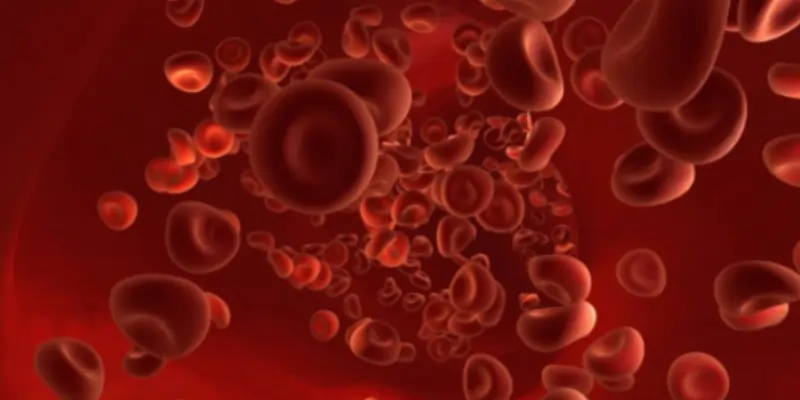
With the growing popularity of Red light therapy for various health and cosmetic purposes, understanding its safety profile is of paramount importance. Among the concerns, the potential link between red light therapy and cancer risk is a topic of particular interest and scrutiny.
UV Rays And Cancer Risk
A common concern regarding any form of light therapy is the possible exposure to ultraviolet (UV) rays, which are known to be carcinogenic. UV rays have the potential to damage the DNA in skin cells, which can lead to skin cancer.
However, it is critical to note that Red light therapy does not involve exposure to UV radiation. The low-level wavelengths used in Red light therapy at home or in clinical settings are free from the harmful UV rays that increase the risk of skin cancer.
Unlike X Rays & Gamma Rays
Extensive studies on Red Light Therapy have consistently shown no evidence to suggest that it causes cancer. On the contrary, Red Light Therapy is a non-ionizing form of radiation, which is less harmful than the ionizing radiation from sources like X-rays and gamma rays, known to increase cancer risk.
A peer-reviewed article explains that red light therapy does not have enough energy to break chemical bonds or cause DNA damage, which are the primary mechanisms by which ionizing radiation can lead to cancer.
Non-ionizing radiation, such as that from red light therapy, does not carry enough energy to break chemical bonds or cause DNA damage.
Red Light’s Impact On Cellular Health Repair
Red light therapy, also known as photobiomodulation (PBM), is increasingly acknowledged for its potential impact on cellular health. This section explores how red light therapy stimulates cellular repair.
There are several proposed mechanisms by which PBM may benefit cancer patients:
- The direct impact of light on tumor cells, possibly inducing apoptosis or cell death.
- The differential effects of PBM on malignant cells as opposed to normal cells.
- The stimulation of the immune system’s response against cancer cells.
At the core of red light therapy’s benefits is its ability to stimulate cellular repair. The therapy involves the use of low-wavelength red light to penetrate the skin, reaching the cells beneath.
To understand how red light therapy aids cellular repair, our in-depth review covers the science that backs up its skin benefits.
This light is absorbed by mitochondria, the energy factories within cells, enhancing their function and encouraging the production of adenosine triphosphate (ATP). Increased ATP production can lead to faster cell regeneration and repair, offering therapeutic effects for various conditions.
Evaluating Risks And Benefits
When considering red light therapy, it is essential to weigh the potential risks against the benefits. This therapy has garnered attention for its non-invasive approach to skin and health issues, but questions often arise about its safety, particularly concerns surrounding “Can red light therapy cause cancer?”
Moreover, Healthline affirms that red light therapy is considered safe for skin applications. To date, red light therapy has been used safely for decades without any reported cases of cancer caused by its use.
Red Light Therapy’s Anti-Cancer Properties

Contrary to the concern that red light therapy might induce cancer, there is scientific evidence to support the anti-cancer properties of red light therapy. Moreover, low-level light therapy (LLLT) using Red Light had no measurable effect on tumor growth, even with treatments administered twice daily for over a month.
Research indicates that red light therapy may have a role in inhibiting tumor growth and promoting cellular repair mechanisms, which could potentially translate to anti-cancer effects. The mitigation of side effects from cancer therapies, such as oral mucositis and chemotherapy-induced peripheral neuropathy, is one of the notable applications of PBM therapy.
Furthermore, the use of PBM therapy has been associated with enhanced survival rates in cancer patients. This suggests that red light therapy may offer a dual benefit: improving the quality of life during treatment and potentially impacting the effectiveness of the treatment itself.
Usage And Safety Considerations
The adoption of red light therapy for various health problems, from muscle pain to skincare, necessitates an understanding of safety protocols and usage guidelines. When engaging in red light therapy, it is critical to adhere to certain guidelines to ensure the treatment’s effectiveness and safety.
According to Verywell Health, red light therapy has been used safely for decades in medical and cosmetic treatments without any reported cases of cancer caused by its use.
To ensure safe use of red light therapy devices, individuals should:
- Follow the manufacturer’s instructions for the specific device being used.
- Use the device for the recommended duration and frequency to avoid overexposure.
- Avoid direct eye exposure to the red light by wearing protective eyewear or closing the eyes during facial treatments.
- Start with a lower intensity and gradually increase it as the skin adapts to the therapy.
- Consult health care providers before starting treatment, especially for those with photosensitivity or on medication that may cause light sensitivity.
Overall, the risks associated with red light therapy are minimal when used correctly, and the benefits for skin conditions and pain management are noteworthy.
However, it remains crucial to follow recommended practices and seek professional guidance to avoid any potential complications.
Red Light Therapy In Clinical Studies
Clinical research into red light therapy, also known as photobiomodulation (PBM), has been expanding, particularly in the context of its effects on cancer patients. Studies have focused on both the supportive role PBM may play in mitigating side effects from cancer treatments, as well as its direct impact on tumor growth.
Need for Further Research
Despite the promising applications of RLT, the need for more comprehensive research is apparent. Misuse of RLT products or failure to follow instructions could potentially lead to skin or eye damage, highlighting the importance of proper usage and adherence to recommended guidelines.
Evidence suggests that RLT is safe for short-term use when used as directed, with few side effects reported. However, the long-term safety of red light therapy devices is not yet fully understood.
According to the Cleveland Clinic, there is controversy regarding the effectiveness of RLT for its promoted purposes, as many studies have limitations such as small participant numbers, lack of placebo control, or are restricted to cell tissue studies.
| Side Effect | Improvement with PBM Therapy |
|---|---|
| Oral Mucositis | Significant Reduction |
| Improvement in PBM Therapy | Symptom Alleviation |
| Radiation Dermatitis | Symptom Alleviation |
| Lymphedema | Reduction in Severity |
Two clinical trials reported that patients undergoing PBM therapy experienced increased overall survival, with a statistically significant number of patients achieving a complete response to cancer treatment and enjoying better progression-free survival.
To establish RLT as a reliable treatment option, more quality studies with larger sample sizes and rigorous clinical trials are needed. As the body of evidence grows, so will the understanding of how RLT can be harnessed to improve health outcomes, potentially revolutionizing the way certain conditions are treated.
Weighing the options between green and red light therapies? Our side-by-side comparison will help you understand the benefits of each.
So, Is Red Light Therapy Carcinogenic Or A Cancer Cure?
In conclusion, while the fear of cancer may be holding some people back from trying red light therapy, the current scientific evidence does not support a clear link between this promising treatment and increased cancer risk. Extensive studies have consistently shown that Red light therapy is a safe, non-invasive option when used as directed, with no reported cases of cancer caused by its use.
Unlike harmful UV rays or ionizing radiation like X-rays and gamma rays, the low-level wavelengths used in red light therapy are not strong enough to damage DNA or cause the mutations that could lead to cancer.
In fact, some research even suggests that red light therapy may have protective effects against tumor growth and could potentially support the body’s natural defenses against cancer.
As the global red light therapy market continues its rapid growth, more high-quality, long-term clinical trials will be essential to fully understand the effects of this therapy on cancer risk and unlock its potential health benefits.
So, while it’s always wise to approach new treatments with a critical eye, the evidence to date suggests that red light therapy is a safe and promising option for those seeking a natural, non-invasive way to support their health and well-being. Consulting with a qualified healthcare professional and following proper safety guidelines can help ensure a positive experience while minimizing any potential risks.
